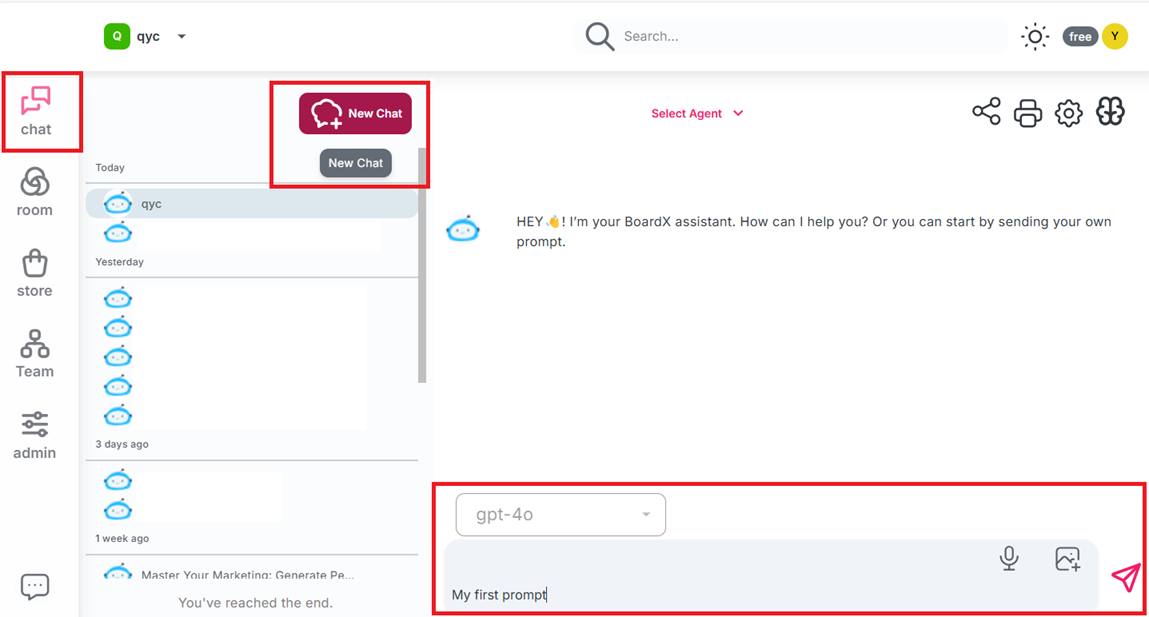Prompt Engineering Quick Start All-in-One
Prompt Engineering refers to designing and optimizing input prompts to maximize the capabilities of AI models. For beginners, mastering this skill can improve interaction efficiency with AI and enhance understanding of how AI works. This article demonstrates how to craft effective prompts through examples.
1. What is a Prompt?
When using AI models, the text input by the user is called a "prompt." It guides the AI to generate corresponding outputs. Well-designed prompts can help AI models provide more accurate and relevant responses.
2. Why is Prompt Engineering Important?
- Improves the accuracy of model outputs: A well-thought-out prompt reduces bias in outputs.
- Enhances user experience: Better prompts make AI interactions more natural and efficient.
- Broad applications: From text generation to image recognition, prompt engineering plays a vital role.
Let’s start with an example that employs multiple prompt techniques:
Task: Write an article discussing the causes of climate change, its impact on the global economy, and possible solutions.
Prompt: The annotations on the right indicate the techniques used in this prompt.
Write an article about climate change. ← Clear and concise
Divide the article into three sections: causes of climate change, its impact on the global economy, and possible solutions. ← Provide contextEach section should be marked with a heading and contain at least two paragraphs. ← Specify format and structure
Include at least one real-world example in each section. ← Use examples
First, list the main causes of climate change; then analyze how these causes affect the global economy; finally, provide three solutions. ← Incremental refinement
Clearly explain that "climate change" refers to anthropogenic global warming rather than natural climate variations. ← Avoid ambiguity
Each paragraph should be no longer than 200 words for readability. ← Specify clear formatting requirements
The total article length should be between 600 and 800 words. ← Set limits and conditions
Start from basic concepts and gradually delve into complex economic impacts and solutions. ← Use step-by-step reasoning
Avoid common misconceptions, such as the idea that climate change only affects certain regions rather than the entire globe. ← Use counterexamples
Assume current policies and technological levels remain unchanged, and analyze possible trends over the next 10 years. ← State assumptions or premises
The article should adopt an academic and formal tone. ← Specify style or tone
Play the role of an environmental economist and provide professional insights and recommendations. ← Role-playing
After each section, include supplementary explanations and examples to deepen reader understanding. ← Use iterative interactions
The above example demonstrates some basic principles and techniques for crafting prompts. Let’s delve into the details:
3. Basic Principles
3.1 Clear and Concise
- Explicit instructions: Ensure that the desired output is clearly stated.
Example:
Poor: “Tell me something about cats.”
Better: “List five interesting facts about cats.”
3.2 Provide Context
- Add background information: Provide sufficient information to help AI understand the task's context.
Example:
Poor: “Write a story about it.”
Better: “Write a story about a lost cat finding its way home.”
3.3 Specify Format and Structure
- Indicate output structure: If a specific format is needed, mention it explicitly in the prompt.
Example:
Poor: “Give me a shopping list.”
Better: “Provide a bulleted shopping list that includes milk, bread, and eggs.”
4. Prompt Techniques Examples
4.1 Use Examples
Provide concrete examples to help AI understand your desired format and content.
- Example:
“Translate the following sentence: ‘The cat is sleeping.’”
Reinforce understanding by repeatedly asking for similar translations.
4.2 Incremental Refinement
Start with simple tasks and gradually increase complexity. This method helps AI adapt better to task requirements.
- Example:
Start: “List five characteristics of cats.”
Then: “Based on these characteristics, write a description.”
4.3 Avoid Ambiguity
Avoid using language that might lead to misunderstanding or multiple interpretations. Ensure clarity in instructions.
- Example:
Poor: “Write an article about banks.”
Better: “Write an article about how financial institutions influence the economy.”
4.4 Specify Clear Formatting Requirements
If you need a specific output format, clearly state it in the prompt.
- Example:
“Provide a bulleted shopping list that includes milk, bread, and eggs.”
4.5 Set Limits and Conditions
If certain conditions or restrictions are critical to the task, clearly specify them.
- Example:
“Summarize the key points of this article in under 200 words.”
4.6 Use Step-by-Step Reasoning
Guide the AI to reason and solve problems step by step, especially for complex tasks.
- Example:
“First, list all relevant factors, then analyze the relationships between them.”
4.7 Use Counterexamples
Help the AI understand what is not desired by providing counterexamples.
- Example:
“Avoid mistakes like: ‘Cats are a type of plant.’”
4.8 State Assumptions or Premises
If the task depends on specific assumptions, clearly state them in the prompt.
- Example:
“Assume cats can talk. Describe a day in their life.”
4.9 Specify Style or Tone
If the output requires a specific style or tone, indicate it in the prompt.
- Example:
“Rewrite the following sentence in a humorous tone: ‘The meeting was surprisingly productive.’”
4.10 Use Iterative Interactions
Guide the AI step by step through multiple rounds of dialogue to produce outputs that better meet your requirements.
- Example:
Round 1: Ask for basic information about cats.
Round 2: Request a detailed description.
By using these techniques, you can design prompts more effectively, interact with AI more precisely, and achieve more satisfactory results.
- Provide examples to guide the AI: Use examples to demonstrate the desired output format and content.
Example:
“Translate the following sentence: ‘The cat is sleeping.’”
Afterward, provide similar translation requests repeatedly to reinforce the model's understanding.
Guide the AI progressively to generate content that better meets requirements through multiple rounds of interaction.
4.11 Role-Playing
Clearly instruct the AI to play a specific role to receive more personalized and contextually appropriate responses.
- Set a Role: Specify the role the AI plays during the conversation to ensure output aligns with character traits.
Example: “You are a seasoned historian. Explain the impact of the Age of Exploration.” - Simulate Dialogues: Use role-playing for dialogue simulations, suitable for training and educational scenarios.
Example: “You are a customer service representative. Assist a customer with product inquiries.” - Recreate Scenarios: Place the AI in specific contexts to provide empathetic responses.
Example: “You are a counselor. How would you comfort a stressed student?” - Specify Tone and Style: Adjust the AI's tone and style based on the role.
Example: “As a storyteller for children, narrate a tale about friendship in a warm and imaginative tone.” - Simulate Historical Figures: Let the AI embody historical figures to respond in the first person.
Example: “You are Einstein. Explain the core concept of relativity.”
Benefits of Role-Playing
- Rich Interaction Experience: Role-playing provides more vivid and engaging interactions.
- Enhanced Creativity: Explore different perspectives and problem-solving methods through role-playing.
- Contextual Adaptability: Tailor AI to specific contexts for more relevant suggestions and solutions.
Role-playing allows AI to engage in more specific contexts and tones, facilitating personalized and emotionally resonant communication.
With pre-configured Agent prompts in BoardX, text generation becomes twice as effective with half the effort!

5. Practical Applications
5.1 Text Generation
Objective: Generate an article about climate change.
Prompt Example:
“Write an article on the impact of climate change, divided into three sections: definition, main impacts, and mitigation measures.”
5.2 Data Extraction
Objective: Extract key information from a text.
Prompt Example:
“From the following text, extract all mentioned dates and events: ‘The meeting is scheduled for October 12, 2023, and the report deadline is December 1 of the same year.’”
5.3 Translation and Rewriting
Objective: Translate text into another language or rewrite it in a different style.
Prompt Example:
“Translate the following sentence into French: ‘The weather today is sunny and warm.’”
“Rewrite the following sentence in a humorous tone: ‘The meeting was surprisingly productive.’”
6. Testing and Optimization
- A/B Testing: Test different prompts to compare output effectiveness and select the best approach.
- Feedback Loop: Adjust and optimize prompts based on actual results.
- Documentation: Record effective prompt templates for future reference and improvement.
7. Latest Techniques and Developments
With the rapid evolution of AI, Prompt Engineering is continuously advancing. Below are some cutting-edge techniques and trends that might be helpful:
7.1 Feedback Loops and Reinforcement Learning
- Reinforcement Learning Strategies: Optimize model responses through user feedback. Use reinforcement learning to adjust model parameters and better meet user needs.
7.2 Multimodal Prompts
- Combining Multiple Inputs: Integrate text, images, or audio into prompts for richer context. For example, embed image descriptions in text prompts to improve output accuracy and relevance.
7.3 Automated Prompt Optimization
- Automation Tools: Use machine learning algorithms to auto-generate and optimize prompts. These tools analyze large volumes of interaction data and adjust prompt structures and content to achieve the best results.
7.4 Human-AI Prompt Collaboration
- Human-Machine Collaboration: Combine human expertise with AI computation to design complex prompt structures. This method is particularly effective in specialized fields like medicine or law.
7.5 Domain Adaptation
- Adaptive Algorithms: Develop models that adjust prompts based on the specific domain. These algorithms identify the unique needs of different fields and automatically refine prompts for more relevant outputs.
7.6 Fine-Tuning Language Models
- Fine-Tuning Techniques: Tailor large language models with domain-specific data to produce more targeted and professional content.
7.7 User-Centric Personalized Prompts
- Personalized Generation: Leverage user interaction history to create customized prompts. This technique enables AI to better address individual preferences and requirements.
By leveraging these advanced techniques, you can further enhance the effectiveness of Prompt Engineering, making AI systems more intelligent and efficient. As technology evolves, Prompt Engineering will play an increasingly crucial role in various applications.
Conclusion
Prompt Engineering is a process that requires continuous learning and practice. By understanding basic principles, mastering common techniques, and persistently testing and optimizing, you can craft more effective prompts and maximize the potential of AI models. We hope this guide serves as a good starting point for beginners, helping you to master this critical skill.

Comments ()